Last week delivered some disconcerting news for people with a specific, strong inherited high risk for developing cancer. An analysis published in the British Medical Journal (BMJ) found that young women with BRCA mutations are more likely to develop breast cancer if they've had more diagnostic studies involving radiation -- like X-rays, CT scans and mammograms -- compared to those who haven't had so many imaging tests before the age of 30.
The study was retrospective and correlative. There is no proof of cause-and-effect. The investigators evaluated almost 2,000 young women in France, the Netherlands and the United Kingdom. The research subjects had either of two common mutations in the BRCA (Breast Cancer Susceptibility) gene, called BRCA-1 and BRCA-2. The analysis didn't establish that mammography, in itself, increases breast cancer risk. But it did find a significantly higher rate of breast tumors in young women with BRCA mutations who reported even low doses of radiation by imaging studies. This result adds a wrinkle to the already-difficult screening and treatment decisions faced by individuals who know they carry BRCA mutations and are likely to get breast cancer.
The findings are plausible for several reasons. First, BRCA proteins function in repairing DNA. Normally, when there's damage to the genetic material along a chromosome in a cell -- such as might occur after exposure to strong sunlight or other radiation -- a complex of DNA-scanning molecules marks the broken double DNA strand and mends it. If a person lacks normal BRCA, they're vulnerable to DNA damage. In some circumstances, this can be one step in cancer's development. For this reason, BRCA is considered a tumor suppressor gene; the normal BRCA reduces the propensity for a cell to become cancerous. Second, the investigators observed a dose-responsiveness: The more rads, even at low doses, to which the women were exposed, the greater the likelihood of getting breast cancer. This kind of result is more likely to be true and suggests causality, that X-rays at relatively low doses can promote cancer formation in people who lack normal DNA repair molecules.
Mutations in BRCA were among the first inherited genetic changes linked to breast cancer. In 1997, the lifetime risk of breast cancer in women with BRCA mutations was estimated in the range of 85 percent. For this reason, many doctors advised prophylactic bilateral mastectomies and many of the affected women chose to undergo the procedure. Since then, there's been a bit of a pullback -- more women are opting for careful observation. Typically this involves close screening, including mammography, which is why the correlative BMJ study matters so much. The report suggests that women who might benefit most from frequent breast examinations, because they've inherited a strong disposition to breast cancer, enhance the risk by undergoing mammography at a young age.
There's no easy solution for people who know they carry a BRCA mutation. This is one of many examples of genetic information that some people want to find out about, and others prefer not knowing. If you do have a BRCA mutation, there are some things, aka modifiable behaviors, the National Cancer Institute suggests you might do to lessen your risk for breast cancer, such as exercising, staying slim, not drinking too much -- the usual good-girl spin that does correlate with less disease from a statistical perspective but, in an individual person, may be irrelevant.
I draw two major conclusions from this study. First, that it's worthwhile for people who've inherited BRCA mutations to collaborate and communicate, so that they and professional researchers can sooner sort out how to reduce their odds of getting serious tumors. Second, what's clear is that we should all be minding our exposure to radiation.
Yes, I do favor careful mammography for most women, every other year by subspecialist radiologists who only do breast imaging, in women over the age of 40. I say this because screening by this method can detect breast tumors before they've spread in approximately 80 percent of cases. When done properly, mammography can save both lives and money. But the procedure should be done only by appropriately-trained individuals, in MQSA-regulated facilities, where the technologists, nurses and doctors all are very familiar with breast imaging. What shouldn't be happening, as I see it, are poor-quality mammograms with old equipment and review by doctors who aren't sufficiently expert.
Other radiology evaluations -- CT scans and PET studies -- should be minimized in all patients. Sure, there are times when a scan can save a person's life. Often enough, though, a good old-fashioned physical exam might obviate the need for an X-ray test. A contributing problem in recent years is that few doctors know how to examine a person, because that skill is rarely taught, as I and others have considered. Patients, with or without BRCA mutations, can help themselves in this regard, to a point, by asking their doctors -- do I really need that CT or PET scan? Those relatively high-rad images can be useful, but they should be ordered only upon due consideration on the physician's part. Will it affect his or her decision-making?
As for the previvors -- or BRCA mutation carriers by any name -- they face tough decisions. No sane woman would want to have her breasts lopped off if it's not necessary to save her from a highly-probable, early demise. It may be that for this group, patients will set the research priorities. If I were a "previvor," I'd want to know what might be done to monitor my intact breasts for cancer without resorting to regular X-ray studies at a young age. There is no effective or safe way to screen for ovarian cancer. To help prevent all of these tumors, I'd want to know about chemicals and other potentially DNA-damaging substances in the environment and food supply, that might contribute to cancer formation among people most at risk.
For more by Dr. Elaine Schattner, click here.
For more on breast cancer, click here.